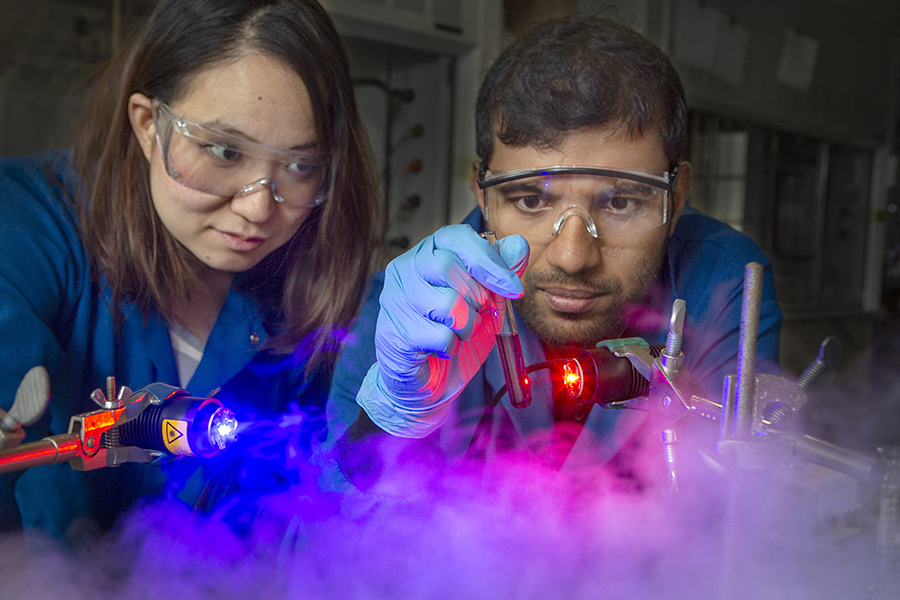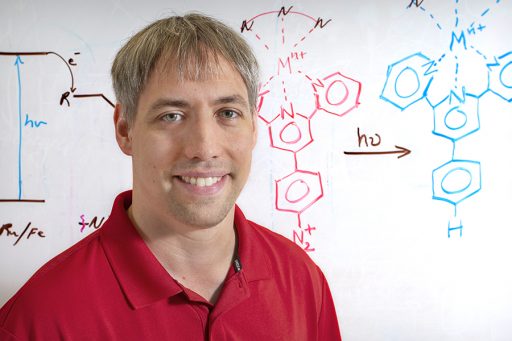
A Florida State University research team is using a simple, readily available energy source to separate metal ions, a process that could help purify water or even recycle nuclear waste.
The source? Light.
Assistant Professor of Chemistry and Biochemistry Kenneth Hanson and postdoctoral researcher Sahan Salpage outline their strategy in a new journal article published in Chemical Communications.
“I’m a photochemist, so light is my solution to every problem,” Hanson said. “We thought we could use light to separate things that are difficult to purify by other means.”
Hanson is collaborating with fellow Professor of Chemistry Thomas Albrecht-Schmitt, who directs the Center for Actinide Science and Technology, a Department of Energy-funded Energy Frontiers Research Center. The center’s mission is to develop technologies to help accelerate nuclear waste cleanup from Cold War-era weapon production sites or nuclear reactors, for example.
This new research is a piece of that puzzle.

Hanson and Salpage began looking at ways light could play a role in separating metal ions. Metal ions include some of the most commonly known chemical elements such as potassium, calcium and iron. They also include the heavier, radioactive elements such as americium and curium.
Separating these elements can be a difficult and expensive process. But, it is an important step in processing and recycling radioactive materials or purifying water that has heavy metal contaminations like lead.
The team felt confident that light could make this separation process easier, greener and cheaper.
Hanson and Salpage began experimenting by surrounding iron and ruthenium ions with an organic chelating agent that binds to the metal. When they subjected the compounds to specific colors of light — blue for ruthenium and red for iron — electrons from the metal were transferred to the organic surroundings, changing their properties. Their differences in properties could then be used to separate the metal ions.
For this study, Hanson and Salpage focused on the iron and ruthenium compounds so they could develop and hone the technique. In the future, the ultimate goal is to separate radioactive compounds that include heavier elements such as americium and curium.
“This is a new strategy,” said Salpage. “It could open up a whole new area of separations chemistry. There’s a lot of potential for this to grow and expand.”
Other authors on the paper include FSU undergraduate Ronald Lanzetta and graduate students Yan Zhou and Jamie Wang.
The research is funded by the Department of Energy.




